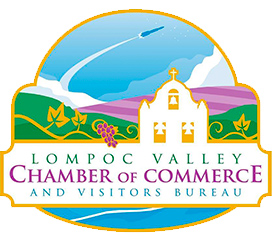Brand Blur: Why Your Design Isn’t Doing Its Job
If your branding looks like a bunch of half-finished thoughts pasted onto a color palette, you’re not alone. Most small businesses are doing what they can with what they have—cheap tools, borrowed templates, maybe a cousin who "knows Photoshop." But bad design doesn’t just sit quietly in the background; it actively repels people. Customers may not be able to explain why something feels off, but they’ll feel it—and they’ll click away, walk past, or choose someone else. And the worst part? You’ll never know you lost them.
Chasing Trends Instead of Building Identity
There’s this urge to look “current” that drives a lot of small business design decisions. One week it’s neon gradients, the next it’s brutalist typography pulled from some startup’s pitch deck. But chasing trends without context is like wearing someone else’s clothes—you might look the part, but it won’t fit right. When your brand tries on a new aesthetic every other month, it feels flimsy, even desperate. What sticks is style rooted in story: your story. Choose design elements that actually connect to your values, your customers, and the atmosphere you’re trying to build—not just what’s hot on design blogs.
DIY Tools Are Great—Until They’re Not
Yes, templates are helpful. But a tool can only take you so far before it starts working against you. Most small businesses fall into the trap of leaning too heavily on plug-and-play design platforms, resulting in visuals that feel flat, impersonal, or just... familiar in the worst way. When customers see the same layout they’ve already scrolled past five times this week, you’ve lost your chance to stand out. Use templates as a base, not a final product. And if you don’t have an eye for design, get one on your team—even part-time. It’s not about spending more; it’s about knowing when to stop cutting corners.
The Font You Forgot Is Saying More Than You Think
When your marketing materials mix fonts from different decades—or worse, different moods—it tells people you’re not paying attention. That serif-heavy newsletter header clashing with a modern sans-serif body might seem harmless, but it silently chips away at your credibility. Inconsistent or outdated typography can signal a business that’s either overwhelmed or out of step with the times. Regularly reviewing your materials to catch these mismatches keeps your visual identity tight and intentional, and using easy online font identification tools is one of the smartest strategies for finding font resources that align with your brand without wasting hours or blowing the budget.
Photos That Feel Like Placeholders
You can tell when a small business grabbed the first free stock photo that looked vaguely relevant and slapped it onto their homepage. The people are too polished, the lighting’s too perfect, and there’s that unmistakable corporate energy that makes it feel like a brochure for an insurance firm. These images don’t add anything—they create distance. People want to see something real. Take your own photos, or hire someone local who knows how to capture your space, your product, your vibe. Authentic imagery doesn’t have to be pristine. It just has to be yours.
Treating Social Like an Afterthought
A lot of businesses treat their social feeds like a dumping ground—just a place to toss promotions or repost memes that vaguely relate to their industry. But design lives here now. It’s the front window of your shop, the tone of your voice, the proof you know your audience. If your feed looks stitched together, full of blurry flyers and pixelated logos, it signals that details don’t matter to you. A consistent social design—aligned colors, reusable templates, legible text—builds brand memory. It also gives you a rhythm. Don’t just show up when you’re selling something. Be present, even when you’re just adding value.
Print Isn’t Dead—But Your Flyers Might Be
Print materials are still powerful, especially for brick-and-mortar businesses. But let’s be honest—most local flyers look like a middle school WordArt experiment. They’re overloaded with fonts, packed with too much copy, and missing any real visual hierarchy. The result? People toss them without a second glance. You want a flyer that earns a pause. That means using white space intentionally, choosing bold focal points, and writing as if every word costs you a dollar. Because it kind of does. A good flyer is like a great hook—short, sharp, and sticky.
Brand Voice Has a Look, Too
You might think brand voice lives only in copy, but it bleeds into your design in subtle ways. Playful brands use rounded typefaces, vibrant colors, asymmetry. Serious, high-trust businesses lean on grid structures, serif fonts, muted tones. If your visual language doesn’t match your tone of voice, it creates friction. Imagine a law firm with comic-book icons or a wellness coach using grayscale photos of office parks. Customers feel that disconnect even if they can’t name it. So if your brand is fun, your visuals should reflect that joy. If it’s all about calm and clarity, strip things back. The closer you get to visual harmony, the stronger the trust.
Design is full of decisions, and indecision is what sinks most small business branding. You don’t have to be an expert, but you do have to choose—what you’re about, how you want people to feel, and which tools will help you get there. Let your design work as hard as you do. If it’s not clear, it’s not helping. And if it’s forgettable, you’re already behind. Good design doesn’t just show what you offer—it shows that you care enough to make it matter.
Discover the charm and adventure of Lompoc by visiting the Lompoc Valley Chamber of Commerce & Visitors Bureau and explore everything our vibrant community has to offer!


